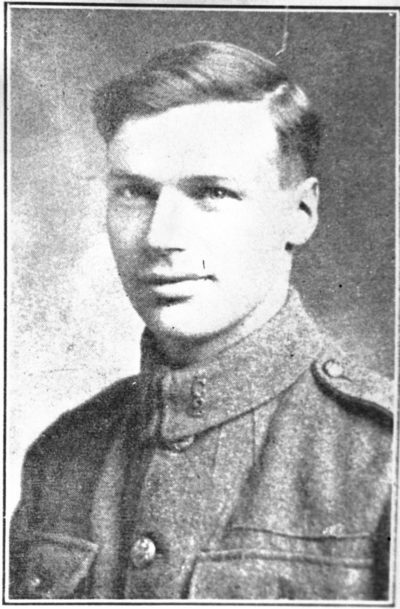Leo Clarke (Lionel Beaumaurice Clarke)

Leo Clarke was born in Waterdown, Ontario. He spent his early years in England, home of his parents, but later returned and settled in Winnipeg, Manitoba in about 1903. When World War I started, he was working as a surveyor for the Canadian Northern Railway in the Canadian north. He returned to Winnipeg to enlist in the 27th Battalion, and after arriving in England in June 1915, transferred to the 2nd (Eastern Ontario Regiment) Battalion, Canadian Expeditionary Force to be with his brother, Charles. The main assault of the Battle of Flers-Courcelette was scheduled for September 15, 1916. Its objective was to occupy a chain of trenches between Martinpuich and Courcelette. On 1 September 1916, Clarke’s battalion was charged with capturing a 50-yard-long salient between the Canadian position at Mouquet Farm and Courcelette to the north. On 9 September 1916, near Pozières, France, the first three companies of Clarke’s battalion went over the top, leaving the fourth in reserve. Leo Clarke, an Acting Corporal at the time, was assigned to take a section to clear the enemy on the left flank to allow his company sergeant to build a fortified dugout that would secure the Canadian position once the salient was overrun. When his section reached the trench, it was so heavily defended that they had to battle their way through with hand grenades, bayonets and their rifles as clubs. Clarke was the only man left standing; the rest had either been killed or wounded.
At that time, about 20 Germans, including two officers, counter-attacked. Leo Clarke advanced, emptying his revolver into their ranks. He then picked up two enemy rifles and fired those too. One of the officers attacked with a bayonet, wounding Clarke in the leg, but Clarke shot him dead. The Germans retreated, but Clarke pursued, shooting four more and capturing a fifth. In all, Clarke killed 19 of the enemy, capturing one. On 11 October 1916, Clarke’s battalion was ordered forward to secure the newly captured Regina Trench which was still under heavy enemy artillery fire. Clarke was crouching in a hole at the rear of a trench when a shell exploded and the back of the trench caved in, burying him. His brother dug him out, but Clarke was paralyzed; the weight of the earth had crushed his back and injured his spine. Clarke was taken to No. 1 General Hospital, but died on 19 October. He is buried in Plot II, Row C, Grave 3A, in Etretat Churchyard, 16 miles north of Le Havre, France. According to a contemporary newspaper article, shortly before his death he wrote his parents, stating: “I don’t care so much for the Victoria Cross as getting home for a couple of months.”
Born
- December, 01, 1892
- Canada
- Waterdown, Ontario
Died
- October, 19, 1916
- France
Cemetery
- Etretat Churchyard
- Etratat, France


